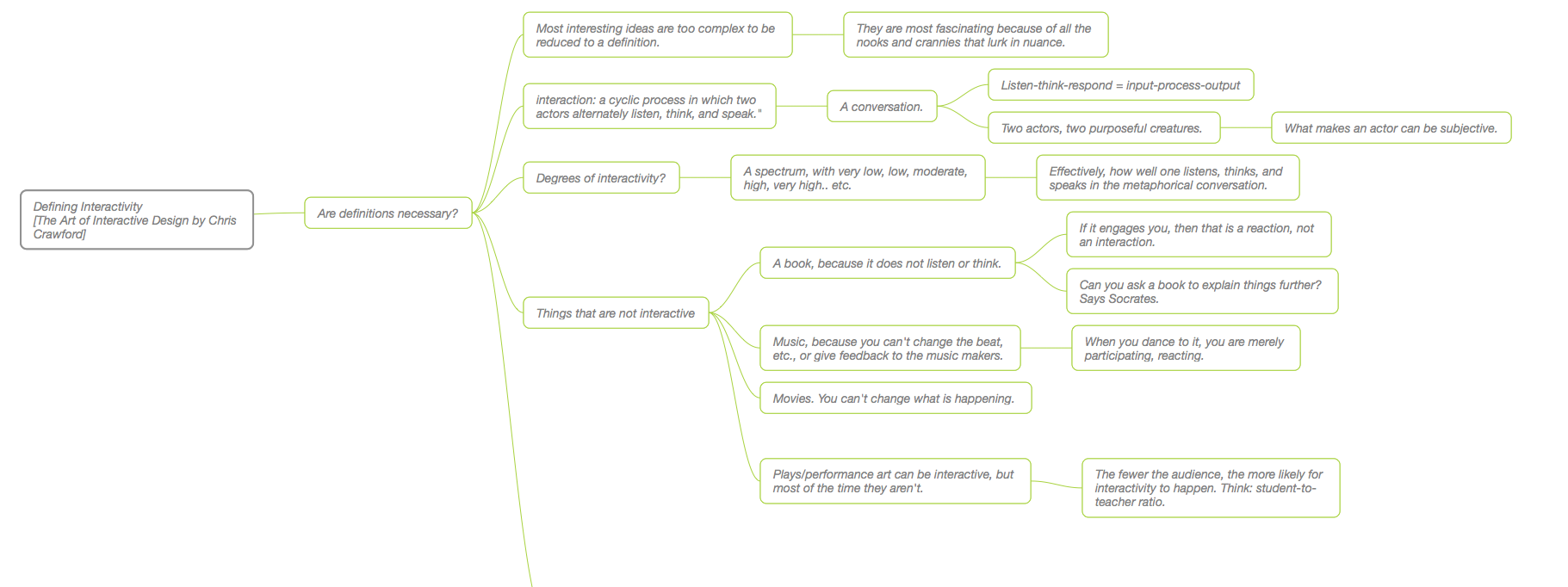Click here to view the above image in proper scale.
1. Defining Interactivity
Chris Crawford argues that many of the mediums that traditionally can be thought of as interactive are in fact not; the opposing actors within them, though they might listen and speak, do not possess the capability to reach the appropriate level of thinking about, or processing, what is being listened to, to provide rich enough responses to be considered interactive. For instance, a dancer dances to a piece of music, but, Crawford argues, they are merely reacting to it; the music, if it is to be considered an actor, is static and does not respond to the dancer. In fact, music merely speaks, it does not think nor listens.
A performance to an audience is typically low in interactivity as the audience cannot influence how the performance is being performed. Similarly, a book does not listen, it just tells.
If I am to add to Crawford’s definition of interaction as a listen-think-speak cycle, I would argue that such a cycle should incorporate the concept of empathy to the model of interaction-as-conversation. This is a loaded statement as empathy entails a more thorough listening and thinking capabilities.
To begin with, an empathic listener is one that retains an accurate, evolving model of the listenee. This entails a working implementation of memory. In addition, to maintain the accuracy of said model, the listener should be able to detect as much information simultaneously about the listenee as possible. This leads to the need for the listener to maintain multi-sensory channels. Finally, being an empathic listener calls for the listen-think-speak cycle to be less asynchronous, and more driven by micro-feedback and immediate, affirming responses.
In a way, this definition is in line with the way Bret Victor argues that the future of interaction design should be modelled around the human capabilities, as manifested in the human hand.
2. What makes a good physical interaction?
A good physical interaction is intuitive. The action perform should be completely and exclusively afforded by the object; it should also be an extension to the actor’s capabilities (as Bret Victor would argue).
3. Examples of works that are good, but not interactive
Most graphic design work, while brilliant and necessary, is poorly interactive. For instance, logos are conventionally static. But why so? One of my all time favorite projects is Stefan Sagmeister’s dynamic identity project for Casa de Musica, where the colors and shape of the logo are a reflection of its current cultural offering.

Another interactively-lacking digital medium is most wayfinding systems. Signage is rarely interactive or accommodating to the state of the viewer.

Leave a Reply